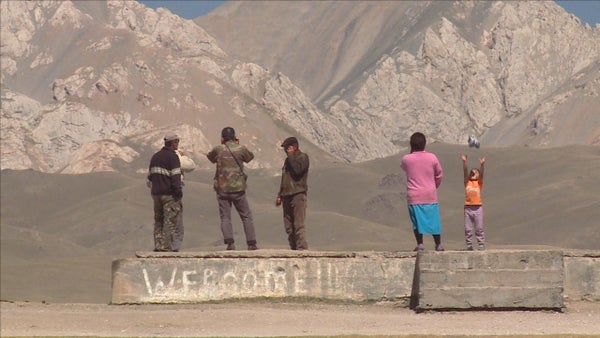This article was published in Scientific American’s former blog network and reflects the views of the author, not necessarily those of Scientific American
The Margaret Mead Film Festival is set to kick-off on Thursday, October 19th at the American Museum of Natural History. This year’s Mead will orient itself around activation and confront head-on the things that presently challenge our cultures, our relationships, and our grounding in society. With films that cover the American political upheaval, the effects of global climate change, the refugee crisis unfolding around the world, and the pace of technological transformation, the Mead looks to pull viewers from their comfort zones and thrust them into the conversations that will lay the foundations for discussions that can hopefully move us forward.
In The Block, which is set to air on Sunday afternoon, filmmaker Nadine Boller captures life as it unfolds in the mountains of Kyrgyzstan around an elevated platform where residents are able to get cell phone reception. They travel considerable distances to connect with loved ones for minutes—sometimes the conversations can be measured in seconds.
It is a reminder of something that many of us likely take for granted on a daily basis—connectivity—and a startling reminder of how widespread and integrated cell phones are with daily life. For these people, the connection is a fragile thing that is subject to the whim of natural forces, but it is vital to their ability to be heard.
On supporting science journalism
If you're enjoying this article, consider supporting our award-winning journalism by subscribing. By purchasing a subscription you are helping to ensure the future of impactful stories about the discoveries and ideas shaping our world today.
The conversations cover a range of mundane topics and emergency moments, again underscoring the presence of technology at our moments of vulnerability. And the viewer is asked to wrestle with ideas of freedom and mobility and connectivity in the span of about ten minutes.
While the films in the Mead are all generally ethnographic in nature, students of anthropology may be particularly interested in:
A Tribute to Zora Neale Hurston which will feature some of the original footage shot by Hurston of the rural Southern African American communities that shaped her novels and plays.
Capturing Empathy: Photojournalism and Anthropology Today which delves into the media that we immerse ourselves in to explore questions of empathy and representation.
Angry Inuk which asks us to look at the impacts of our activation on behalf of others through the experiences of the Inuk, who have been banned from hunting seals—a culturally and economically significant event for them.
The Museum’s recent commitment to First Nations representation in the renovation of the Northwest Coast Hall is honored at this year’s Mead as well. First Nation artist Amanda Strong will set-up a centerpiece installation under the Great Canoe in the Grand Gallery featuring several miniature sets, props, and puppets. Strong’s narrative weaves together her family history and the experience of colonialism.
Planning to go? Tell us about it. Comments have been disabled on Anthropology in Practice, but you can always join the community on Facebook.
--
You might also like:
Rethinking Home with “Citizen” Anthropologists
Anthropology in a Non-Traditional Path
Inspiring Makers in Underrepresented Communities
Historic Northwest Coast Hall to Undergo Significant Restoration
